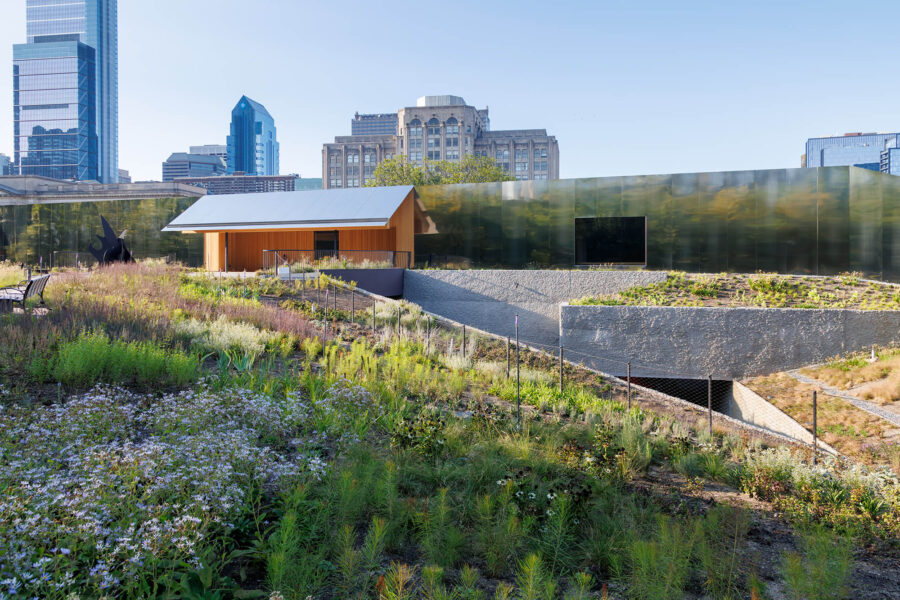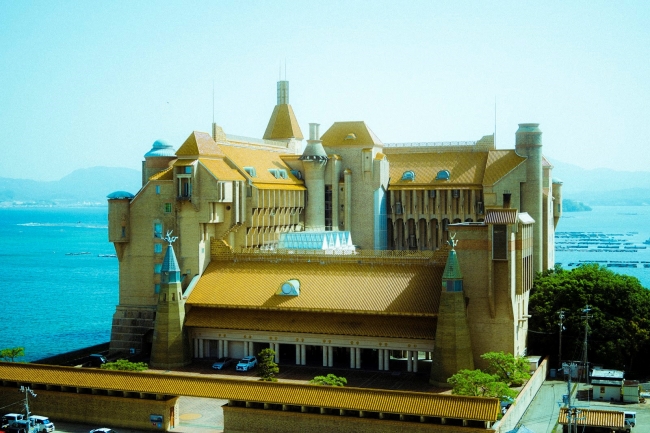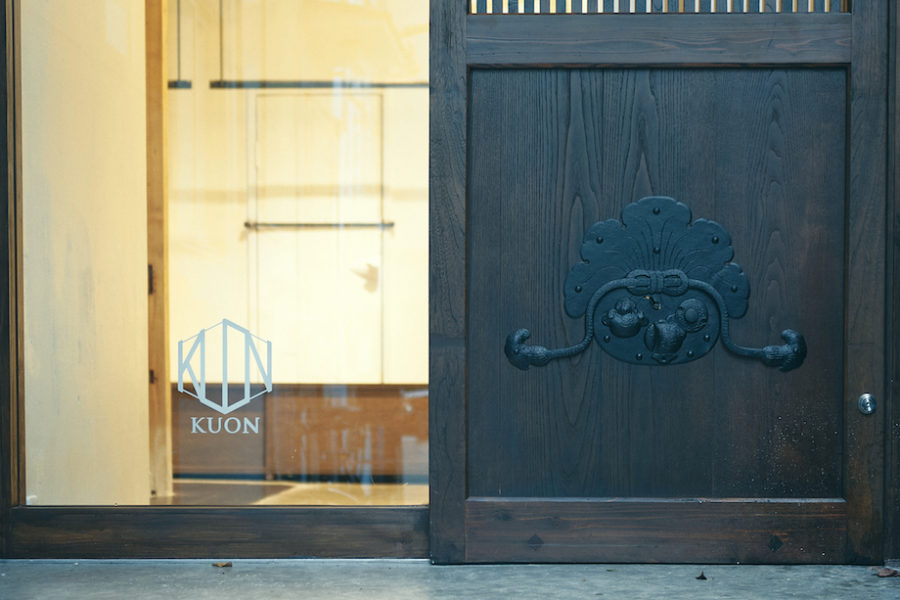
CULTURE


©︎ Dave Burk_SOM
〈ステレオフォームスラブ(Stereoform Slab)〉は、従来のRC造の建築にも適用でき、コンクリート使用量を20%減らすことができるサステナブルな建築システムです。
世界の建設業において最も使われていてCO2排出量が多いコンクリートを効果的に使うため開発されました。1936年の設立当初からさまざまな学際的なプロジェクトを手がける建築事務所SOM(Skidmore, Owings & Merrill)が設計しました。
(以下、SOMから提供されたプレスキットのテキストの抄訳)
コンクリートは、世界中の建設におけるCO2排出量に最も大きな影響を与えている物質である。
SOMが開発した、コンクリートの量を劇的に減らす効率的な建設方法のプロトタイプ〈ステレオフォームスラブ〉は、大規模なプロジェクトに適用することで、建築業界を変える可能性を持っている。

©︎ Dave Burk_SOM
今一度考える「コンクリート」
〈ステレオフォームスラブ〉は、高度なロボット製造技術を用いて設計された、未来の建築システムのプロトタイプである。世界各地で使用されている一般的なコンクリートスラブに代わるものとして、建設におけるCO2排出量を劇的に削減する方法を示している。
SOMは実物大のプロトタイプを使用し、シカゴ建築ビエンナーレ2019にてこのコンセプトをデビューさせた。

©︎ Dave Burk_SOM
調査によると、建物のCO2排出量の40~60%は、コンクリートスラブ自体の作成に起因していることが分かっている。
高度なロボット工学を用いたサステナブルなコンクリート型枠により、コンクリート使用量は従来のシステムから20%削減し、製造工程全体における炭素排出量を20%削減した。

Elevation Render
フレキシビリティを追求した設計
〈ステレオフォームスラブ〉は、一般的なRC造の柱スパンを30フィート(約9.14m)から38フィート(約11.58m)まで拡大する。
この構造システムを建物全体に使用した場合、このスパンの拡大により、空間のフレキシビリティを高めることができる。このフレキシビリティの向上により空間の需要に対応しやすくなるため、結果的に建物のライフサイクルの延長にもつながるのである。
建設コストを上げずにこのようなフレキシビリティを実現するコンクリート成形システムの開発により、高度な建築設計が行われない建物、つまり建築環境の大部分を占める従来型の建物にも使用できるため、世界的な炭素排出量を大幅に削減できるのである。

Optimization
地域の実情に合わせた材料選択
コンクリートと鉄筋のバランスの最適化は、〈ステレオフォームスラブ〉の設計プロセスにおける重要な検討事項の1つであった。
プロトタイプを作成したシカゴでは、鉄筋のほとんどがリサイクルされている。そのため、ライフサイクルにおける鉄筋のカーボンコストは、強度重量比で見るとコンクリートよりはるかに低くなる。

Formwork Diagram
このことから、コンクリート量を減らし鉄筋を増やすという設計方針をとった。その結果梁の形状は、ライフサイクルを通したカーボン分析をせずコンクリートと鉄筋を同等に扱った場合とは異なり、アーチ型に近い形状となった。
これは、地域がもつ文脈や特性を考慮することが、地域もつ材料の制約に対応した最適なモデルの設計につながることを示している。

©︎ Dave Burk_SOM
パートナーシップとコラボレーションによるイノベーション
より効率的なコンクリート型枠とシステムを見つけるには、設計、最適化、製造という工程を、あらゆる分野と業種を横断して複合的に検討する必要がある。
コンクリート構造システムの性能を向上させるには、エンドツーエンドの徹底的な統合、つまり設計と製造のより親密な関係が不可欠であり、建築環境における炭素削減の目標を達成するためには、このようなコラボレーションが必要なのである。

©︎ Dave Burk_SOM
〈ステレオフォームスラブ〉は、Odico Construction Robotics、Sterling Bay、McHugh Construction、Autodesk とのパートナーシップにより実現した。
SOMのデザインパートナーであるスコット・ダンカ(Scott Duncan)は次のように語る。
「この技術が建築環境全体に適用されれば、より表現力豊かでサステナブルな、革新的な建築の未来への道を切り開くことができるのである。」

©︎ Dave Burk_SOM
以下、SOMのリリース(英文)です。
Stereoform Slab
Expertise: Structural Engineering
Topics: Advanced Fabrication, Applied Construction Technology, Building Systems + Assemblies, Materials, Modular + Prefabrication, RoboticsProject Facts
Collaborators: Odico Construction Robotics, Sterling Bay, McHugh Construction, Autodesk
Concrete is the biggest contributor to the carbon footprint of buildings worldwide. SOM developed a prototype for an efficient construction method that dramatically reduces concrete quantities — and it has the potential to transform the building industry if applied at scale.
Rethinking concrete
Stereoform Slab is a prototype for a future building system designed using advanced robotic fabrication techniques. As an alternative to the ubiquitous concrete slab, it demonstrates an innovative method to dramatically reduce the carbon impact of construction. SOM debuted the concept with a full-scale prototype at the 2019 Chicago Architecture Biennial.
Research shows that 40 to 60 percent of a building’s carbon footprint results from the development of the concrete slab itself. With this sustainable fabrication technique of concrete formwork using advanced robotics, the design team used 20 percent less concrete than a conventional system, resulting in a 20 percent overall carbon reduction.
Designed for flexibility
Stereoform Slab extends the conventional concrete span (column spacing) from 30 to 38 feet. When deployed as a structural system throughout a building, this increased span enables more flexibility in the planning and use of its spaces. This has the potential to extend a building’s lifecycle, as longer bays can more easily be adapted to changing demands.
By developing a concrete forming system that affords this added flexibility without increasing construction costs, it becomes possible to achieve significant embodied carbon reductions in buildings that aren’t typically the subject of advanced architectural design—conventional buildings that compose a majority of our built environment, and its respective contributions to global carbon emissions.
Calibrating material choices to local context
Achieving an optimal balance between concrete and reinforcing steel was one of the primary considerations during the design process. In Chicago, most of the reinforcing steel available is recycled, and therefore the lifecycle carbon cost is much lower than concrete, by strength-to-weight ratio. This led to a design that increased reinforcing steel in order to decrease concrete quantities, and in turn the shape of the beam took on a more arching form, beyond what it typically might if the team had ignored lifecycle carbon analysis and weighted the two materials equally. This is an example of how context and location can affect our optimization models, and result in designs that are hyper-responsive to local material limitations.
Innovation through partnership and collaboration
Finding more efficient concrete forms and systems requires a complex synthesis of design, optimization, and fabrication, across all disciplines and trades. Rigorous, end-to-end integration is essential to improving the performance of concrete structural systems, and it can also help us map out better relationships between design and production. Achieving our goals for carbon reduction in the built environment will require exactly this type of collaboration.
Stereoform Slab was designed and constructed in partnership with Odico Construction Robotics, Sterling Bay, McHugh Construction, and Autodesk.
“When applied to the entirety of the built environment, this technology can pave the way to a more expressive, sustainable, and innovative future of architecture.”
Scott Duncan, Design Partner
「Stereoform Slab」SOM 公式サイト
https://www.som.com/research/stereoform-slab/









